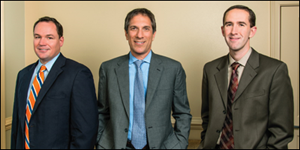Posted by: Clemson Eye in News

Greenville, SC, June 2017
What is a cataract?
Currently more than 24 million Americans have cataracts. They are the leading cause of blindness worldwide₁ and many people don’t treat them due to fear of eye surgery.
A cataract is a clouding of your eye’s natural lens. Cataracts slowly develop over time as the proteins in the lens start to clump and obscure vision. As the cataract grows, it blocks light causing blurry and dull vision. Typically, cataracts start to develop by age 60, but one in six people over age 40 are affected by cataracts.₂
Because they generally do not cause pain, redness or tears, people often don’t even recognize they are developing a cataract. Here are the signs to be aware of:
• Blurred vision, double vision, ghost images, or you sense a “film” over your eyes.
• Lights seem too dim to see close up, or night driving is difficult.
• New prescriptions for eyeglasses don’t improve your vision.
If you are having difficulty going about your daily activities because of blurred vision, you may have a cataract and should book an eye exam with your eye doctor immediately. Cataracts are highly treatable, and cataract surgery is one of the most common, comfortable and safest surgeries in the U.S. While you are at your appointment, ask your doctor if you are a candidate for laser cataract surgery.
What is Astigmatism?
Astigmatism is a common defect in the cornea or lens that leads to blurry vision, trouble reading, squinting, eye strain, headaches and tired eyes. It is common, often present from birth and interferes with us having perfect vision.
“Most of the focusing power of the eye happens along the front clear window surface, called the cornea, and through the lens. A normal cornea is rounded like a soccer ball. But a cornea with astigmatism is shaped more like a football,” explains Dr. Brian Johnson of Clemson Eye.
The cause of the astigmatism is unknown. While all degrees of astigmatism may be treated with eyeglasses or contact lenses, this is a compromise because there is resulting distortion of your peripheral vision. If you require cataract surgery and have astigmatism, you can get superior visual quality by having your astigmatism corrected during your laser cataract surgery.
Modern Laser Cataract Surgery
Modern laser cataract surgery involves a tiny 2.2 mm stitch-less laser incision and the replacement of the diseased, cloudy lens with a clear lens implant. During the 15-minute procedure, patients are comfortably awake and experience clear vision during a prompt recovery.
“Until a few short years ago, cataract surgery required the use of a manual surgical blade to open the eye and capsule supporting the lens. This increased the chance of variable outcomes. Laser cataract surgery benefits patients because it causes less variability and tissue damage than the bladed method,” says Dr. Johnson.
Better Clarity after Laser Cataract Surgery
Perfect vision is the goal in most cataract surgeries. Unfortunately, it is reached in only 55 percent of traditional cataract surgeries₃ due to the uncorrected astigmatism left behind and possible measurement prediction errors.
“My partners and I always put intense effort into our surgical planning with the best technology, testing and analysis to treat astigmatism,” says Dr. Joe Parisi, medical director at Clemson Eye. “Now, the same laser used for laser vision correction can also precisely treat astigmatism, make incisions and chop the cataract,” says Dr. Parisi.
With recent LenSx® laser FDA approval, surgeons now create incisions that are up to 10 times more precise than manual incisions.₄ “The laser is customized for each unique eye and creates a superior relaxing incision inside the cornea, sparing the delicate nerves while fixing the astigmatism. We have definitely seen laser cataract surgery result in more precise incisions, less eye stress and better outcomes for our patients,” adds Dr. Parisi.
Local Leaders in Eye Surgery
“A new era has begun for cataract patients,” says Dr. Don Glaser, also a surgeon with Clemson Eye. “We were the first in the Upstate to offer laser cataract surgery and we have the most experience with it. Clemson eye has four offices in Upstate South Carolina, and we offer many visual solutions including laser vision correction for both distance and near vision, implantable contact lenses, lens exchanges and laser cataract surgery.
Drs. Johnson, Parisi and Glaser are American Board and LenSx® Certified Ophthalmologists. They have performed over 50,000 cataract and refractive procedures. They are leaders in the Upstate with implanting advanced lenses such as TECNIS® Symfony, ReSTOR® and now the ReSTOR-Toric® 3.0 for their cataract patients. Also, Clemson Eye now offers “topography-guided” Lasik with Contoura Vision; the most advanced modern lasik in the nation. Their legacy of innovation continues with modern eye surgery.
1. IDK
2. 2. NEI.neh.gov Vision Problems in the U.S.: Prevalence of Adult Vision Impairment and Age-Related Eye Disease in America. Prevent Blindness America and he National Eye Institute, 2008
3. Aiming for emmetropia after cataract surgery: Swedish National Cataract Register study. Behndig A; Montan P; Stenevi U; Kugelberg M; Zetterstom C; Lundstrom M
4. Nagy Z Takacs A, Filkorn T, Sarayba M. Initial clinical evaluation of an intraocular femtosecond laser in cataract surgery. J Refract Surg. 2009;25(12): 1053-1060